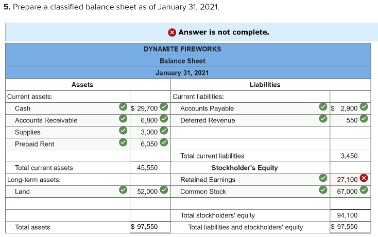Content
- Could IRS Funding from the Inflation Reduction Act Be The Help Needed to Reduce the Increasing Form 941 Processing Backlog?
- Credits and Deductions: No More Tax Deductions
- What Are The 2022-2023 IRS Mileage Rates?
- Insurance Rates
- Standard Optional Mileage Rates for 2022
- How much charity can you deduct in 2023?
Since 2019, there has been a slow decline in the rate, from 57.5 cents in 2020, to 56 cents in 2021. The mileage rate for driving an automobile for charitable purposes during 2023 will remain unchanged at 14¢ per mile. The second reason is reimbursing at the rate above the IRS mileage rate. Again, this is considered additional income and is also taxed as regular wages to an employee would be. Companies use the IRS mileage rate as their reimbursement for a number of reasons.
- And the 2019 IRS mileage rates rose along with the rise of premiums for both commercial and corporate customers.
- Based on the initial IRS rate, your deduction for business driving for the first six months of 2022 is $5,850 (10,000 miles × 58.5 cents).
- After decreasing two years in a row, the rate by which taxpayers may compute their deductions for costs of using an automobile for business purposes will go up in 2022.
- Under the Tax Cuts and Jobs Act of 2017, taxpayers cannot claim a miscellaneous itemized deduction for unreimbursed employee travel expenses.
- Members may download one copy of our sample forms and templates for your personal use within your organization.
Still, in some jurisdictions, state laws may apply, so employers need to stay mindful of state labor laws to stay compliant. The issue of paying for remote workers’ expenses, whether because of legal obligations or as a way to attract and keep talent in a tight labor market, isn’t going away as the pandemic recedes. July and August are traditionally the peak driving months in the U.S. Members may download one copy of our sample forms and templates for your personal use within your organization. Please note that all such forms and policies should be reviewed by your legal counsel for compliance with applicable law, and should be modified to suit your organization’s culture, industry, and practices.
Could IRS Funding from the Inflation Reduction Act Be The Help Needed to Reduce the Increasing Form 941 Processing Backlog?
It’s important to note that you can only claim the standard mileage rate for a vehicle you own or lease and that you must log all of your mileage in order to claim it on your taxes. An eligible mileage log must include the date, destination and purpose of each business trip. Beginning January 1, 2022 and now ending June 30, 2022, the standard mileage rate for business purposes is 58.5 cents/mile. Keep in mind that you still may fare better from a tax standpoint using the actual expense method than you would with the standard mileage rate, even after the latest rate increases. When a church owns the vehicle driven by a staff member and uses the vehicle for personal use, the value must be added to their W2 income.
- In this case, your mileage won’t increase or decrease according to your income—you’re paid a flat rate for doing maintenance.
- All state agencies may use the IRS rate for travel incurred on and after Jan. 1, 2021.
- Other factors, like increased depreciation have contributed to the 2019 surge too.
- For cars employees use for business, the IRS set the portion of the standard mileage rate treated as depreciation at 26 cents per mile for 2022.
Previously, various personal deductions of over 2% of Adjusted Gross Income (AGI) had been deductible. According to the IRS, employees who use their car for work
can no longer take an employee business expense deduction as part of their miscellaneous itemized deductions. Employees can’t deduct this cost even if their employer doesn’t reimburse the employee for using their own car.
Credits and Deductions: No More Tax Deductions
Their travel falls under the category of business travel, which was impacted by the TCJA beginning in 2018. Employers can also pay expenses using a variable rate for different locations. “The disadvantage is that the employer must recalculate the FAVR allowance at least Irs Announces 2021 Mileage Rates For Business, Medical And Moving once every three months,” as payments to employees must be made at least quarterly. “Taxpayers always have the option of calculating the actual costs of using their vehicle rather than using the standard mileage rates” by providing adequate records, the IRS explained.

The new rate for deductible medical expenses will be 22 cents per mile beginning July 1, up from 18 cents per mile for the first six months of 2022. Beginning July 1, 2022, the standard mileage rate for business travel will be 62.5 cents per mile, up 4 cents from the 58.5 cents-per-mile rate effective for the first six months of the year. The IRS also announced an increased standard mileage rate for medical driving and moving for members of the military. Standard mileage rates are used to calculate the amount of a deductible business, moving, medical, or charitable expense (miles driven times the applicable rate).
What Are The 2022-2023 IRS Mileage Rates?
Another important number to show is the percentage of your business trips versus personal trips per vehicle. You can do this by dividing business miles over your car’s total mileage. Regardless of which mileage method you use, or if you don’t plan to make these claims on your tax return at all, it’s essential to track your miles. This also means that you can’t switch to the standard mileage method if you’ve used the actual expense method during your first year of ownership. Need a better way to track your mileage for work and tax deductions? The Everlance app effortlessly and automatically records your mileage driven and gives you a tax-ready table at the end of the year showing your mileage, estimated deduction and more.
If you manage a vehicle reimbursement plan at your workplace, consider switching to a FAVR (Fixed and Variable Rate) reimbursement program. FAVR is the fairest and most accurate way to reimburse your employees for owning and operating their personal vehicles for work purposes. Among the benefits of a FAVR program is keeping up with changing operating costs to fairly reimburse your drivers. Instead of just an annual (or semi-annual) update, the variable reimbursement rate is typically updated monthly. The increase in standard mileage rate will affect all businesses that reimburse employees for driving for business purposes.
In addition to the safe harbor rate, however, employers can choose other IRS-permitted reimbursement options. On the other hand, you do need to qualify for the standard mileage rate. Midyear increases in the optional mileage rates are rare, the last time the IRS made such an increase was in 2011. And the rate for moving-expense driving (currently available only for active-duty members of the military) will also increase to 22 cents per mile beginning July 1, up from 18 cents per mile.
In conclusion, if you are looking to develop an efficient and fair mileage reimbursement policy, sticking to the standard IRS mileage rate may be the best way to go. Aside from staying legally compliant, having a mileage reimbursement policy based on the 2023 mileage rate comes with certain benefits. Most importantly, it is a smart way to attract and retain top-performing employees and get your tax deducted. How are the mileage https://kelleysbookkeeping.com/ rates set and what factors determine the IRS mileage rate for 2023? To calculate the standard mileage rate, the IRS takes into account cost data and statistical analysis of data from the prior year. For purposes of the fleet-average valuation rule and the vehicle cents-per-mile valuation rule, the maximum FMV of automobiles (including trucks and vans) first made available to employees in calendar year 2022 is $56,100.
Insurance Rates
But if you think about it, it’s easy to see there are more expenses to driving than just fuel prices. Taxpayers always have the option of calculating the actual costs of using their vehicle rather than using the standard mileage rates. While fuel costs are a significant factor in the mileage figure, other items enter into the calculation of mileage rates, such as depreciation and insurance and other fixed and variable costs. There are additional rules that may prevent a taxpayer from using the standard cents-per-mile rate or the actual expenses method. For example, leased vehicles must use the standard mileage rate method for the entire lease period (including renewals) if the standard mileage rate is chosen for the first year. Whether you opt to deduct the standard mileage rate or use the actual expense method depends one which approach saves you more money.


